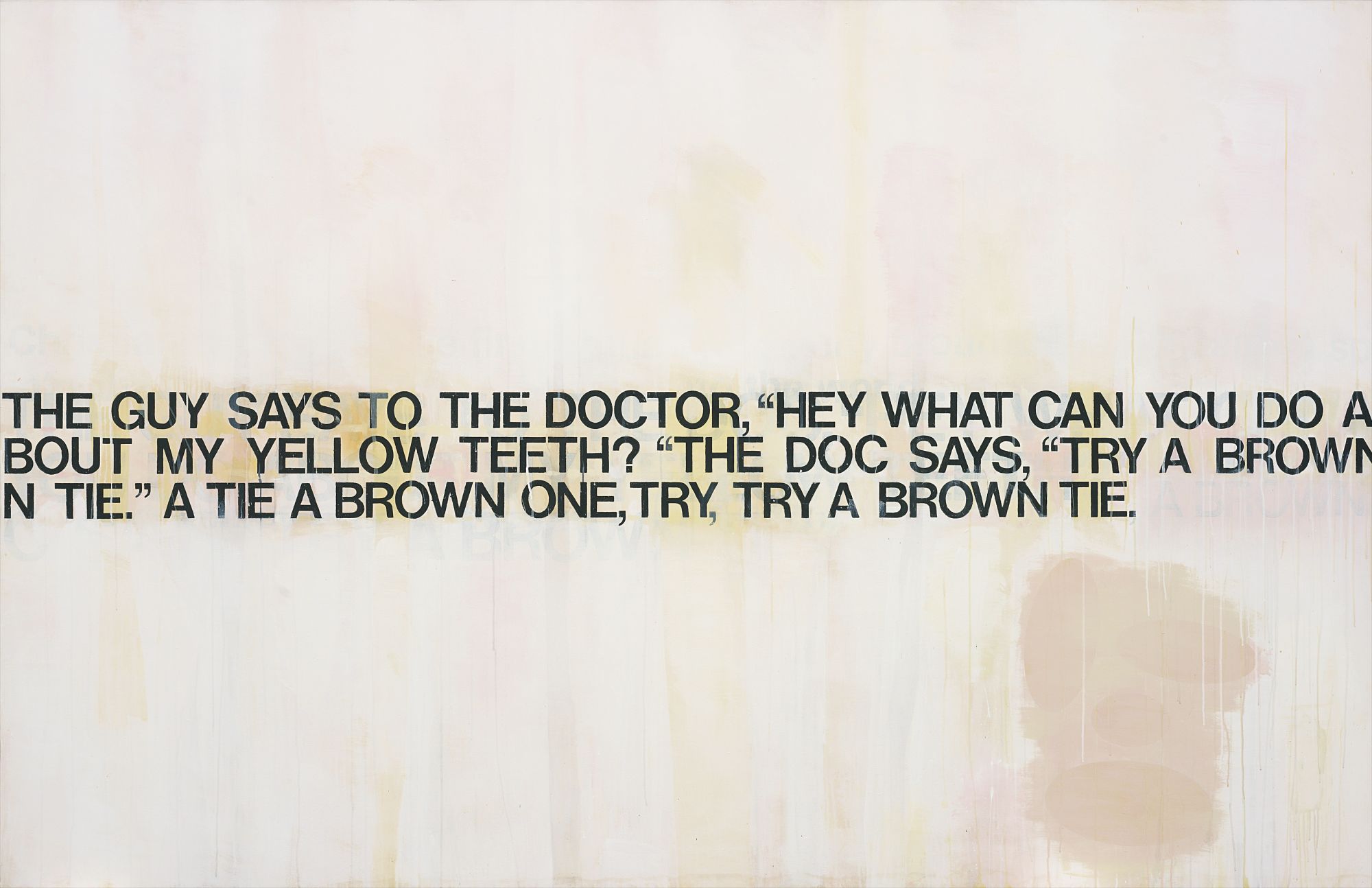

24Δ
Richard Prince
What Can You Do?
Full-Cataloguing
The pastel hues employed in the present lot shy away from Prince’s more stark, monochromatic paintings from earlier in his career. Yet, this time, the artist seems to have chosen this yellowish background in accordance with the joke based on colour-matching humour.
The joke itself is stencilled in black in a narrow band across the width of the canvas. The strong design of the work, in its symmetry and the detailed composition, echo Barnett Newman’s zip paintings. Richard Prince’s first joke paintings date back to the mid 1980s when, after having posted up a small handwritten joke on a piece of paper, he started imagining how it would have looked on a gallery wall. At first handwritten, his jokes developed in time into more substantial works in which the same joke is repeated on monochrome canvases of different colours. Prince is part of the Pictures Generation – alongside Cindy Sherman, Robert Longo, David Salle, Barbara Kruger and Sherrie Levine – who came to prominence in the 1970s and were known for their appropriation of images drawn from the mass media. Just as his earlier Cowboys and Nurse Paintings series, Prince’s jokes are therefore a further ‘variation’ on this method.
“I have never thought making anything new. I make it again. I am very much against trying to make anything new in a modernist approach. I think you can do only something for yourself.” (Richard Prince in Vincent Pécoil, ‘Richard Prince, Writer’, in Richard Prince, Canaries in the Coal Mine, exh. cat, Astrup Fearnley Museum of Modern Art, Oslo, 2006, p.128) The true meaning of the joke paintings is still a matter of discussion. From a distance, they could even be read as abstract works. But viewed closely, their formal simplicity and their repetition seem to set them in the tradition of conceptualism. All in all, Prince’s works are loaded with references to Structuralism and Post-modernist theories. Repetition deprives the joke of its humour thus reducing it to a mere text in which the signifier takes over on the signified. After this, what is left?
Richard Prince
American | 1947For more than three decades, Prince's universally celebrated practice has pursued the subversive strategy of appropriating commonplace imagery and themes – such as photographs of quintessential Western cowboys and "biker chicks," the front covers of nurse romance novellas, and jokes and cartoons – to deconstruct singular notions of authorship, authenticity and identity.
Starting his career as a member of the Pictures Generation in the 1970s alongside such contemporaries as Cindy Sherman, Robert Longo and Sherrie Levine, Prince is widely acknowledged as having expanded the accepted parameters of art-making with his so-called "re-photography" technique – a revolutionary appropriation strategy of photographing pre-existing images from magazine ads and presenting them as his own. Prince's practice of appropriating familiar subject matter exposes the inner mechanics of desire and power pervading the media and our cultural consciousness at large, particularly as they relate to identity and gender constructs.